Not sure if this is the correct forum but I bought this in a French vintage shop maybe 10 years ago before I got into penturning myself. I brought it to a specialist pen shop and they said it could not be fixed. It has no marks i.e. makers name, and I am not sure what material it is made of. It was sold as Bakelite but there were difficulties in translation so ?? It appears to be an ink/rollerball type device. I have attached photos including the removable parts. I have put ink into the "well" and placed the nib part into an ultrasonic bath but there seems to be a blockage. I would be grateful if anyone can enlighten me with regards to the material used, and if it comes apart more, and if it can be brought back to working order. I'd imagine the ink pouch material has perished
Many thanks
Maria
Many thanks
Maria
Attachments
-
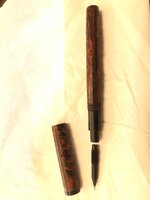 0D1C3451-54B5-4F7F-AE56-5BA847A01207.jpeg152.5 KB · Views: 170
0D1C3451-54B5-4F7F-AE56-5BA847A01207.jpeg152.5 KB · Views: 170 -
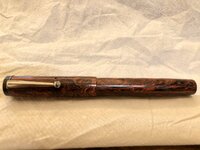 9FCDEEFA-8BBB-4E25-A252-02DBCD362BD5.jpeg208.7 KB · Views: 185
9FCDEEFA-8BBB-4E25-A252-02DBCD362BD5.jpeg208.7 KB · Views: 185 -
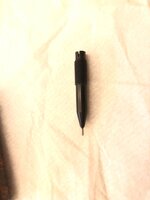 1DA5E5FB-1F93-4B51-ACC8-DA0E30F64DA3.jpeg112.6 KB · Views: 161
1DA5E5FB-1F93-4B51-ACC8-DA0E30F64DA3.jpeg112.6 KB · Views: 161 -
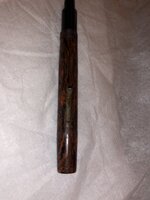 D8D07743-D206-42DF-91DD-AD016A325680.jpeg210.4 KB · Views: 162
D8D07743-D206-42DF-91DD-AD016A325680.jpeg210.4 KB · Views: 162 -
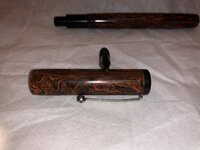 D96D1380-EB46-474F-B59E-17AB1E85739B.jpeg199.8 KB · Views: 156
D96D1380-EB46-474F-B59E-17AB1E85739B.jpeg199.8 KB · Views: 156 -
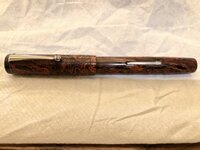 83F6DE51-7F49-4ADC-87B4-8EDBE5F44467.jpeg201.7 KB · Views: 168
83F6DE51-7F49-4ADC-87B4-8EDBE5F44467.jpeg201.7 KB · Views: 168
